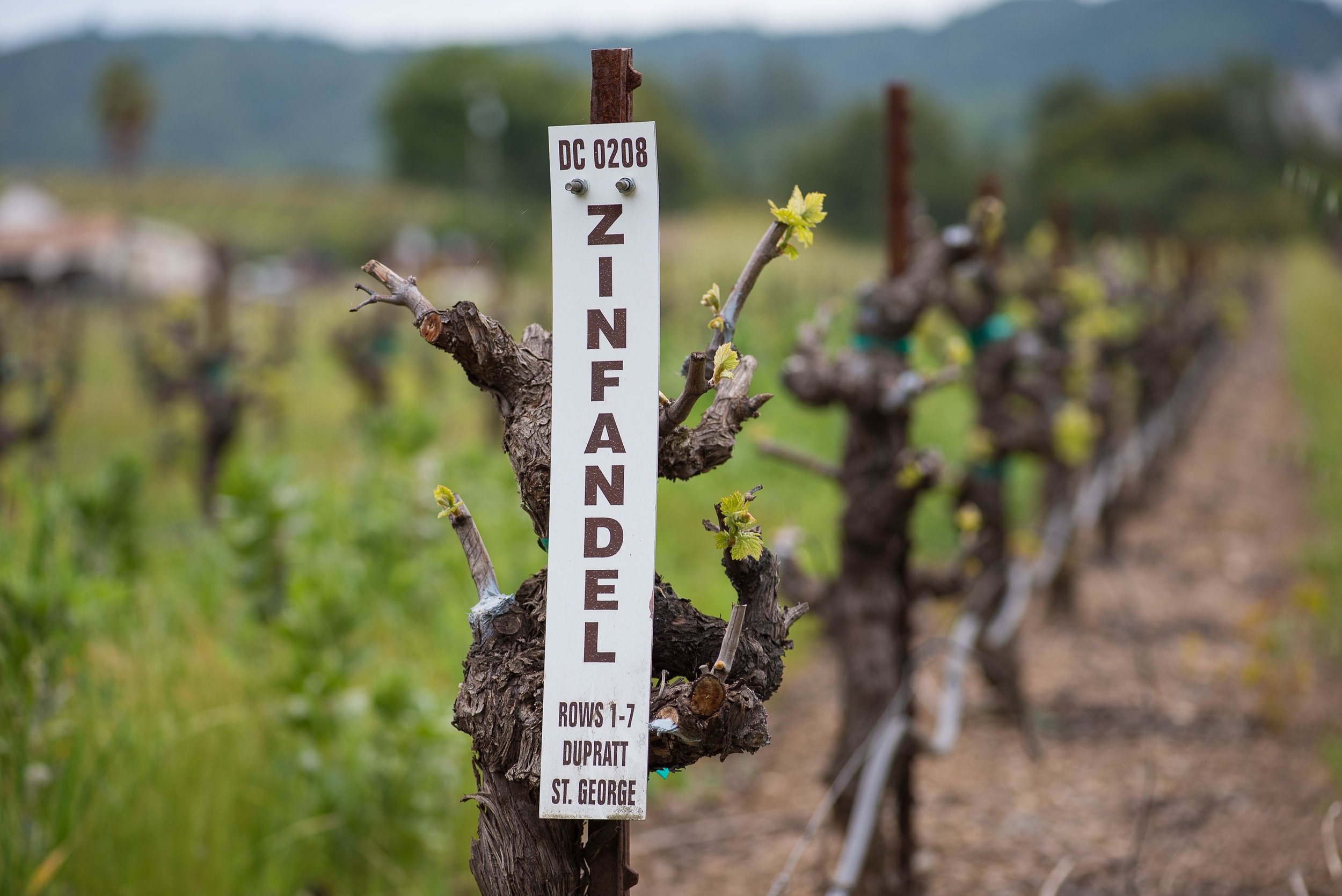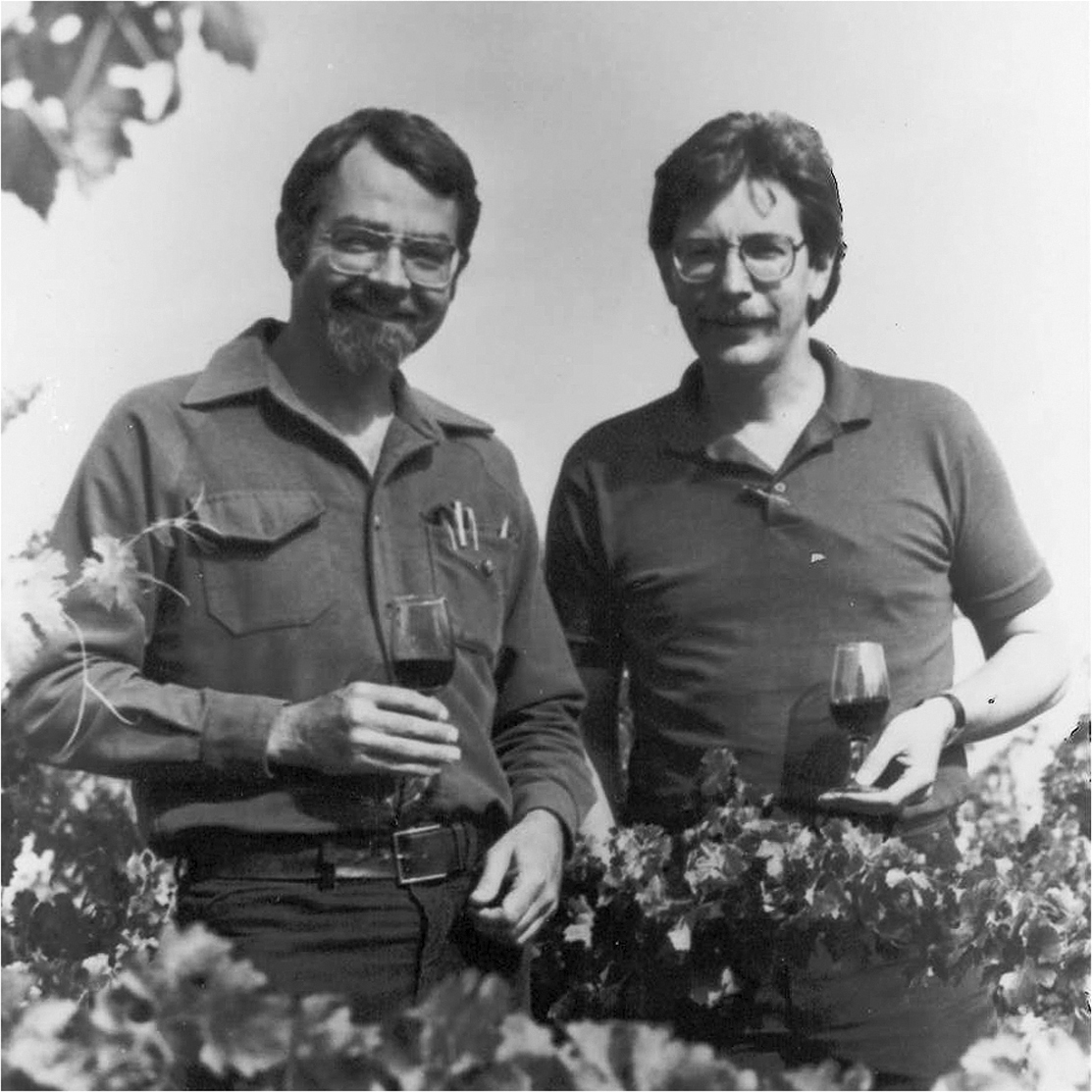Zinfandel Deserves More Respect
old zinfandel vines at a Dry Creek Valley vineyard, courtesy Dry Creek
It’s oft-misunderstood, but it’s really a versatile red wine for all seasons.
It’s highly unusual to meet a grape that can hold your hand through scorching summers, cold winters and everything in between. Zinfandel, often dismissed as a jammy tasting, dark-fruited wine reminiscent of blueberry pie, is capable of showing off a bright versatility. There are expressions that are fresh, red-fruited (some are as light as pinot noir) and ready to please for all four seasons and all age ranges.
Of course, the big and bold traditional styles of zinfandel still exist to remain consistent with a percentage of loyal zin lovers. After all, wine styles and trends go through an ebb and flow all throughout history. In fact, there was a time where orange wine was the original white wine and another when nobody liked rosé. Can you believe it? There are so many factors that dictate what’s popular among consumers—demographic, socio-economic status, market trends, what’s trending on Instagram, etc. Some of the vineyards in places like Dry Creek Valley have zinfandel vines older than 115 years, and winemakers are pumping new life into these “old vine” roots as others plant new stock and discover what this grape is capable of.
Alcohol Professor correspondent and wine professional Andrew McFetridge and Editor-in-Chief Amanda Schuster weigh in on zin:
Adapting to an evolving industry
gnarly vines at Lytton East vineyard, courtesy Ridge Vineyards
Amanda Schuster: I don’t understand why in this day and age, when everyone’s gotten over their fear of pink wine and even embraced products like wine in a can, zinfandel still gets such a bad wrap. There are producers who have recognized the versatility of the grape and released thoughtful, delicious expressions of it. There was a time a few decades ago when it was definitely over-planted in California, but now people are going out of their way to cultivate it and look after it properly, especially in places like Dry Creek Valley and Lodi, but even in Napa.
Andrew McFetridge: Zinfandel is reinventing itself in the hands of innovative winemakers. As tastes and consumer expectations evolve over time, new styles can catch on and become the next big thing in the marketplace. It is ultimately the consumers who dictate the demand for a certain change in style.
An example is Berryessa Gap Vineyards Zinfandel 2017 - Yolo County, California ($22)
Winemaker Nicole Salengo is as at the helm producing this flirty and fun zinfandel. Pure and focused, Berryessa Gap’s 2017 Zinfandel is a light style (48 hours maceration) that goes with everything from pulled pork sandwiches to an elegant dish of bone marrow. Farming 60 acres of land in California’s non-AVA Yolo County, Salengo grows a number of other grapes, including grenache, tempranillo, syrah and chardonnay.
First zinpressions
Ridge founders Donn Reisen and Paul Draper, courtesy Ridge Vineyards
AS: My parents have always collected wine and a close family friend was one of the first investors in Ridge Vineyards. My folks always gave me a little taste of wine with a meal, and I literally grew up drinking Ridge, which I wholeheartedly realize is unusual and lucky. Unfortunately my parents tend to allow some of their best bottles to cellar too long, but we’ve been opening up some Ridge bottles from the late ‘70s and they’ve held up even better than some of the serious Bordeaux in the collection! Still tons of fruit and vigor. It was so pleasant to recently taste Ridge’s Lytton Springs 2016 blend ($40) and experience how that wine has evolved over time from this old vine vineyard, incorporating small percentages of petite syrah, carignan and mataro (mourvedre) to contribute a Rhône-like depth of flavor.
AM: When I first started enjoying wine (way before I seriously studied it) I didn't love zin, but I also didn't hate it. It did the job. As I dove more into my studies, I discovered the fascinating history, origins and transformations of the zinfandel grape—even white zinfandel has an amazing story. I knew about Ridge, because when you study wine you learn about The Judgement of Paris and all its successful participants. I remember my first taste of Ridge Geyserville Zinfandel 2015 while studying for my Certified Sommelier Exam in 2017. It was magic, finessed and opulent. A far cry from the zinfandel I tasted a decade earlier.
A generation gap born of bad marketing choices misconceptions
AM: For a long time zinfandel was considered the go-to wine for parents and grandparents, riding the wave of the California wine boom in the 1970s and 1980s. Zin plantings were inexpensive and prevalent and prices soared for wines made from other grapes—the only consumers that could keep up were the adults that could afford quality zinfandel bottlings. Cheaply made, low quality zinfandel fetched lower prices and was unable to impress the younger consumer leading them to turn to other styles of wine.
AS: I worked for years in wine retail and we had plenty of customers of a certain generation who regularly purchased “white” zinfandel, which is actually a sugary, pink, zin-based bulk wine that was created in the ‘70s and ‘80s (maybe it’s a “fascinating story” as Andrew says, but whoever came up with that term deserves the same eternal fate as the inventors of asbestos and the programmers behind Clippy). On the other end of the spectrum are these huge, alcoholic and expensive cult zinfandels. So trying to sell good zinfandel was like attempting to move electric purple bell-bottoms. Customers asked what we had in other grapes instead. However, there were the ones who were game, and I would recommend something like Frey Vineyards, which is a biodynamic, balanced and affordable wine ($15) that has always been a go-to for me (and recently won gold in the 2019 NY International Wine Competition). I can say those customers would return the store saying how much they loved it and wanting to explore more zinfandel producers. You just need to make the right connection.
Nicole Salengo of Berryessa Gap, which pairs remarkably well with fish, photo by Amanda Schuster
Can zinfandel become more culturally acceptable?
AM: In my experience as a sommelier, to get someone to stray from what they normally drink, it takes a lot of jazzy buzz words (i.e. “zippy”, “fresh”, “elegant”, “dusty”, “robust”, “decadent”). If that doesn't work, I would confidently customers a taste. After all, you can talk all you want but the bottom line is how well it is enjoyed. I think the taste of zinfandel has become a lot more refined in the last decade in general. Producers know what works and what doesn't. To make something culturally acceptable you need a handful of people to believe in it and a captive audience and the rest follows. I think zinfandel is at that point now.
AS: It deserves a Sideways pop cultural moment, though not in the merlot sense (poor, misunderstood thing!), but as in what happened to pinot noir. It deserves to be that popular. You know, pinot can be alcoholic and jammy too, people! But there are zins that are just as elegant, refreshing and even age-worthy as a well made pinot and for some reason that’s constantly overlooked.
If you like ____, drink zin instead
AS: Hey Andrew, I have a question. As a somm, if a guest requests a certain grape, when would you recommend a zinfandel in its place?
AM: When it comes to wine, I am always trying to get guests to try something they have never experienced before. That's the fun in wine right? Luckily, where I work [Corbuzz in NYC] our guests are very receptive to the idea of tasting something new. How I sell zinfandel (if it doesn't sell itself already) is that I generally collect bits of information—region, price, etc. If a guest is struggling, but know they like big full Australian shiraz, for example, but maybe can't drop $100 on a bottle that night, or maybe want to try something different, I may point them toward something of quality, similar in structure, and accessible in price. In that instance California zinfandel is a home run.
For one with bigger, bolder flavors that doesn’t run too alcoholic, try Bear Flag 2016 ($24) from Sonoma County. It’s full and rich, but isn’t so huge that it overpowers food. This is a natural match for meaty dishes, but also BBQ shrimp or Mexican cuisine like enchiladas.
More zinfandel pairings
Bear Flag, photo by Amanda Schuster
AS: Andrew and I recently tasted four very different zins together with a panel of two other wine professionals hosted by ZAP (Zinfandel Associates & Producers) at Corkbuzz Union Square. All the wines were paired with very different styles of dishes from salad to roasted meat. Andrew, were there any pairings that surprised you?
AM: I was very surprised how well Dry Creek Vineyards Old Vine Zinfandel 2016 ($30) paired with the Pan Seared Rainbow Trout and Pesto Risotto. I was open to the idea of red wine and fish, because I don't like to limit myself with food and wine pairings. It was brilliant and unexpected. Rich textures from each party sang gloriously together. In 1985, Dry Creek Vineyards was the first to use "Old Vine Zinfandel" on a wine label. Though today it has no legal definition. However, the estate’s vines are pre-Prohibition and still producing low yield, concentrated fruit.
AS: Since we were doing this tasting round robin and we each tasted the wines in a different sequence, I had the Berryessa Gap with my fish and it also rocked! I had the Dry Creek with that insanely rich burger and it was incredible. I wonder how it fared with the bone marrow? I had the pleasure of sipping the Ridge with that one. Bear Flag with saucy lamb chop did not disappoint either.
With so much versatility, variation, high quality and affordable price points, there are so many reasons to give zinfandel a chance! Pop one open with your next takeout. Cheers!





